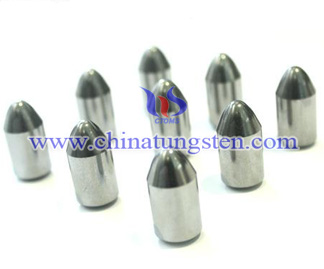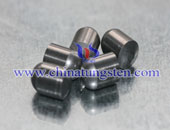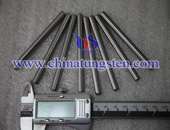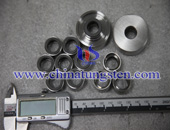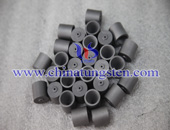Tungsten Carbide Buttons HRA Standard
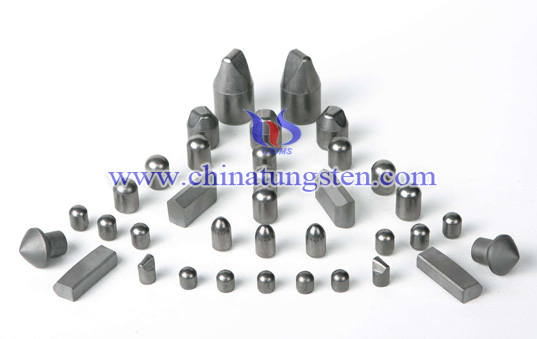
Tungsten Carbide Buttons HRA Standard
Rockwell hardness test is now one of a wide detection range of several ordinary indentations hardness test. The others, such as Brinell hardness (HB), Vickers hardness (HV), Vickers micro-hardness and so on. Rockwell does not have unit, which is a non-mechanical properties of dimensionless pointers. The most common hardness scales are A, B, C three kinds, usually referred to HRA, HRB, and HRC. Rockwell hardness of HRA is often used in tungsten carbide hardness testing. HRA, namely Rockwell Hardness A scale, which uses 98.07N (equal to 10kgf) as the initial pressure, uses diamond pressure head with 120°cone apex angle or steel ball with 1.59, 3.18mm in diameter and then pressurized to 588.4N (equal to 60kgf). Finally, get the hardness value by indentation depth. The measuring range of HRA is 20-88 HRA, by American standards ASTM E40 can be obtained the conversion: 27 HRA ≈ 30 HRB, 60 HRA ≈ 100 HRB ≈ 20HRC, 85.6 HRA ≈ 68 HRC.
Although this standards test range covers from the hardness of mild steel (HRB), hard steel (HRC) to tungsten carbide, it rarely used in testing mild steel and mainly used for testing thin hard steel plate, deep carburizing steel and tungsten carbide in practical application. With the rapid development of tungsten carbide technology, some materials reaches 93-94 HRA, which exceeds the measuring range of 20-88 HRA, it becomes normal in some high-end engineering. In addition, HRA ruler can be used in distinguishing a sample was a mild steel or hard steel used to test, if the hardness value is lower than 60 HRB, it can switch to HRB scale, if the hardness value is higher than 60 HRA can switch to HRC scale.
In several hardness measuring methods, such as Brinell hardness (HB), Rockwell hardness C scale (HRC), Vickers hardness (HV), Leeb hardness (HL). In practical application, except common HRA scale for testing tungsten carbide, there are two usual kinds of measuring methods, one is Brinell hardness (HB) and the other is Rockwell hardness C scale (HRC). The biggest difference between Brinell hardness (HB) and Rockwell hardness is that Brinell hardness uses steel ball as pressure head, while Rockwell hardness test is using a diamond head. Therefore, Brinell hardness (HB) test standard is generally used for mild materials, such as non-ferrous metals iron before heat treatment or after annealing.
It is based on a certain test load (usually 3000kg) and press a certain diameter (usually 10mm) hardened steel ball or tungsten carbide ball into the tested metal surface. After keeping a specified time, then unload and measure the indentation diameter of the surface, which ratio between load and the indentation area is its Brinell hardness (HB), units of N / mm2. However, HRC scale is suitable for a range of 20-70 HRC. When the hardness is lower than 20 HRC, the conical section of pressure head is pressed into too much, which leads to sensitivity decreasing so that you should switch to HRB ruler. Although the limit of HRC is 70 HRC, when the sample hardness is higher than 67 HRC, diamond pressure head tip is too fragile to withstand the pressure so that usually use HRA ruler in testing tungsten carbide buttons.
If you have any other question or inquiry of tungsten carbide buttons, please feel free to contact us through the following methods:
Emails:sales@chinatungsten.com
Tel.: +86 592 5129696/86 592 5129595
Fax: +86 592 5129797

